Secret Prison Found in Syria as Authorities Seize 12 Million Captagon Pills
Syrian authorities discover a secret underground prison from the Assad era in Homs, while a separate operation near Damascus seizes 12 million Captagon pills.
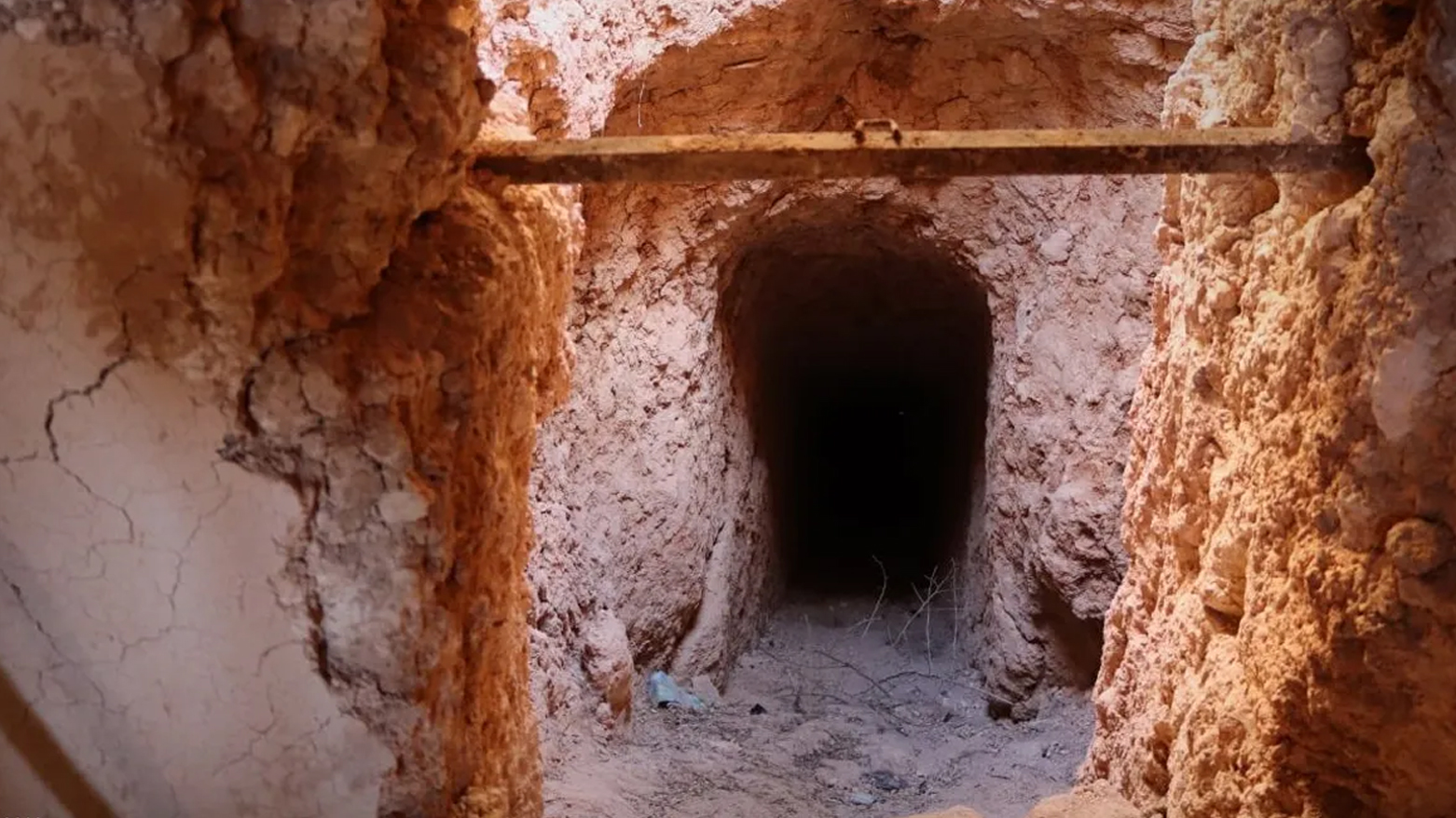
ERBIL (Kurdistan24) – In a chilling discovery that exhumes the ghosts of a brutal and systematic campaign of state-sponsored terror, Syrian security forces have unearthed a secret underground prison in the countryside of Homs, a subterranean chamber of horrors reportedly used by the former regime of Bashar al-Assad to detain and torture civilians during the nation's devastating civil war.
The grim finding, announced by the official Syrian news agency SANA, provides a harrowing and tangible glimpse into the vast and shadowy archipelago of clandestine detention centers that human rights organizations have long warned were the epicenter of the Assad government's crimes against humanity.
This reckoning with the physical remnants of a dark past comes as Syria's new authorities simultaneously confront the toxic legacy of the conflict's criminal economy, announcing a massive security operation near Damascus that resulted in the seizure of 12 million Captagon pills and the arrest of a major drug trafficking network's leader.
These two dramatic and seemingly disparate events, unfolding in different parts of the country, together paint a vivid picture of a nation in a profound and difficult transition, grappling on two critical fronts: one, a painful and necessary confrontation with the systematic brutality of its past, and the other, a determined struggle against the pervasive criminality that flourished in the chaos of war and continues to poison its present.
A Subterranean Chamber of Horrors
The official announcement from SANA, an agency once the primary mouthpiece for the Assad regime, sent a shockwave through a population still scarred by years of conflict and forced disappearances. The report detailed the discovery of the underground prison north of the village of 'Buwaiza Salmiya' in the al-Mukharram area, located in the eastern countryside of Homs province.
According to the images published by the agency, the site is situated in a desolate, deserted area, a remote landscape that would have provided the perfect cover for the clandestine and inhuman activities conducted within.
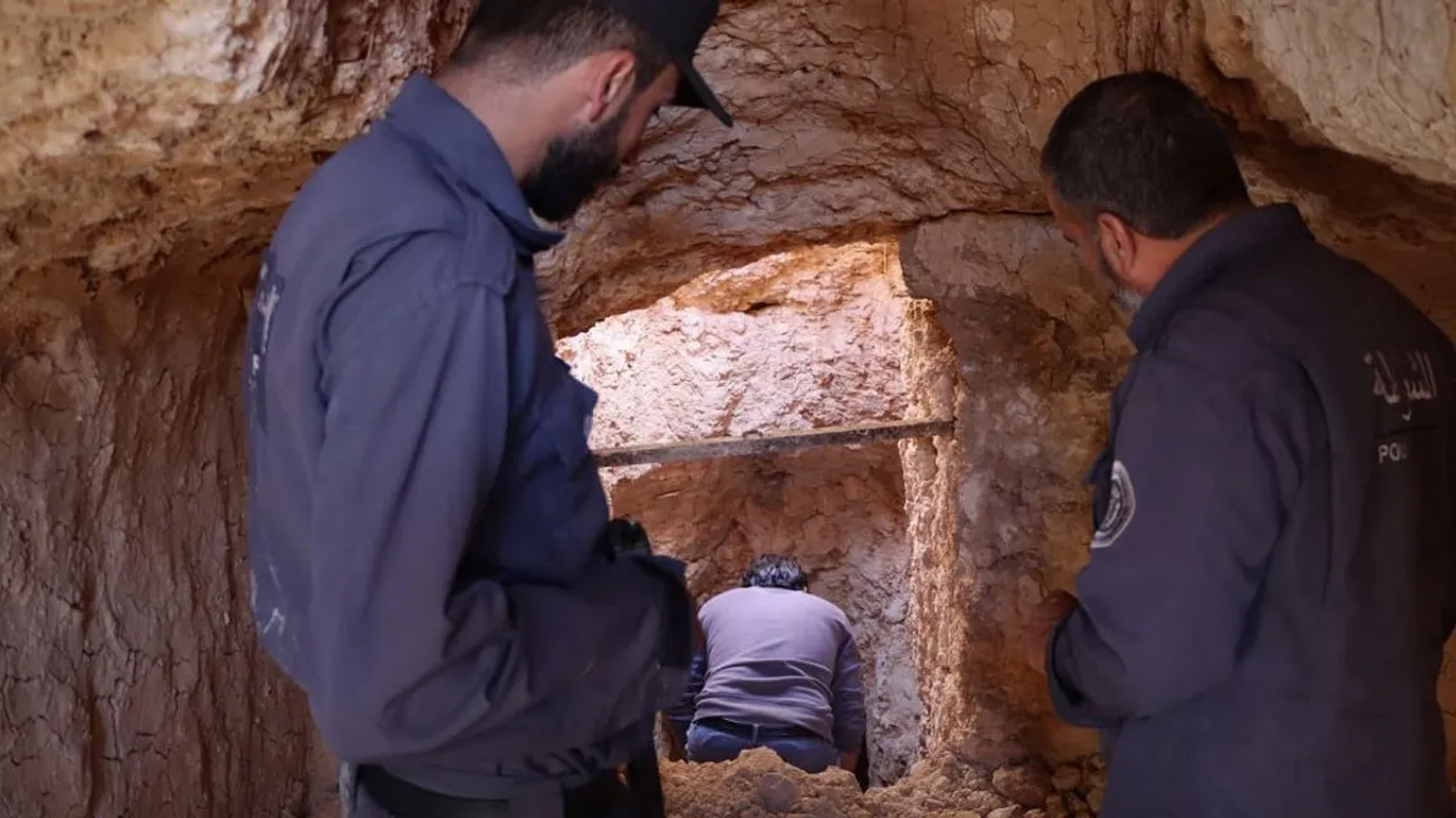
Omar Mousa, the deputy director of the al-Mukharram sub-district, provided further details, stating that the prison was located approximately 10 days ago during police searches of suspicious locations in the area, suggesting a proactive effort by the new authorities to investigate and secure regions previously under the complete control of the former regime's security apparatus.
Mousa’s description of the site paints a grim picture of a purpose-built facility for human suffering. "The prison is hidden underground and has a locked iron door," he stated, describing an entrance designed to conceal its existence and secure its victims.
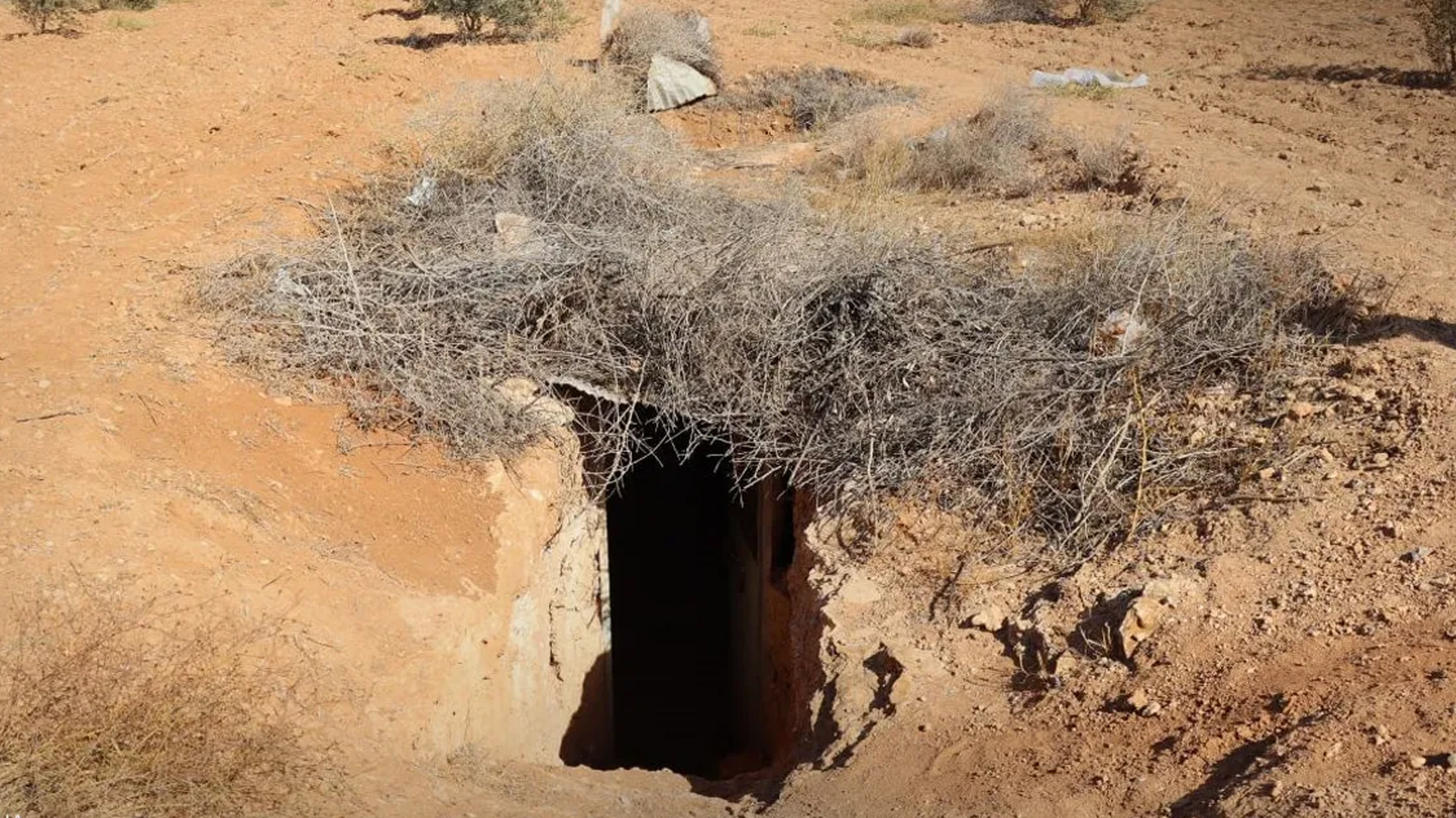
The contents found inside offered a silent, chilling testament to the lives of those who were held captive within its walls. "Inside, there were items such as sponge mattresses and blankets," Mousa noted, pointing to the basic, rudimentary provisions for prisoners.
But alongside these meager items of survival were the instruments of pain: "torture tools like wood and rope." This stark juxtaposition of simple bedding with crude but effective tools of torment speaks volumes about the dual purpose of such facilities—not merely to detain, but to break the bodies and spirits of those deemed enemies of the state.
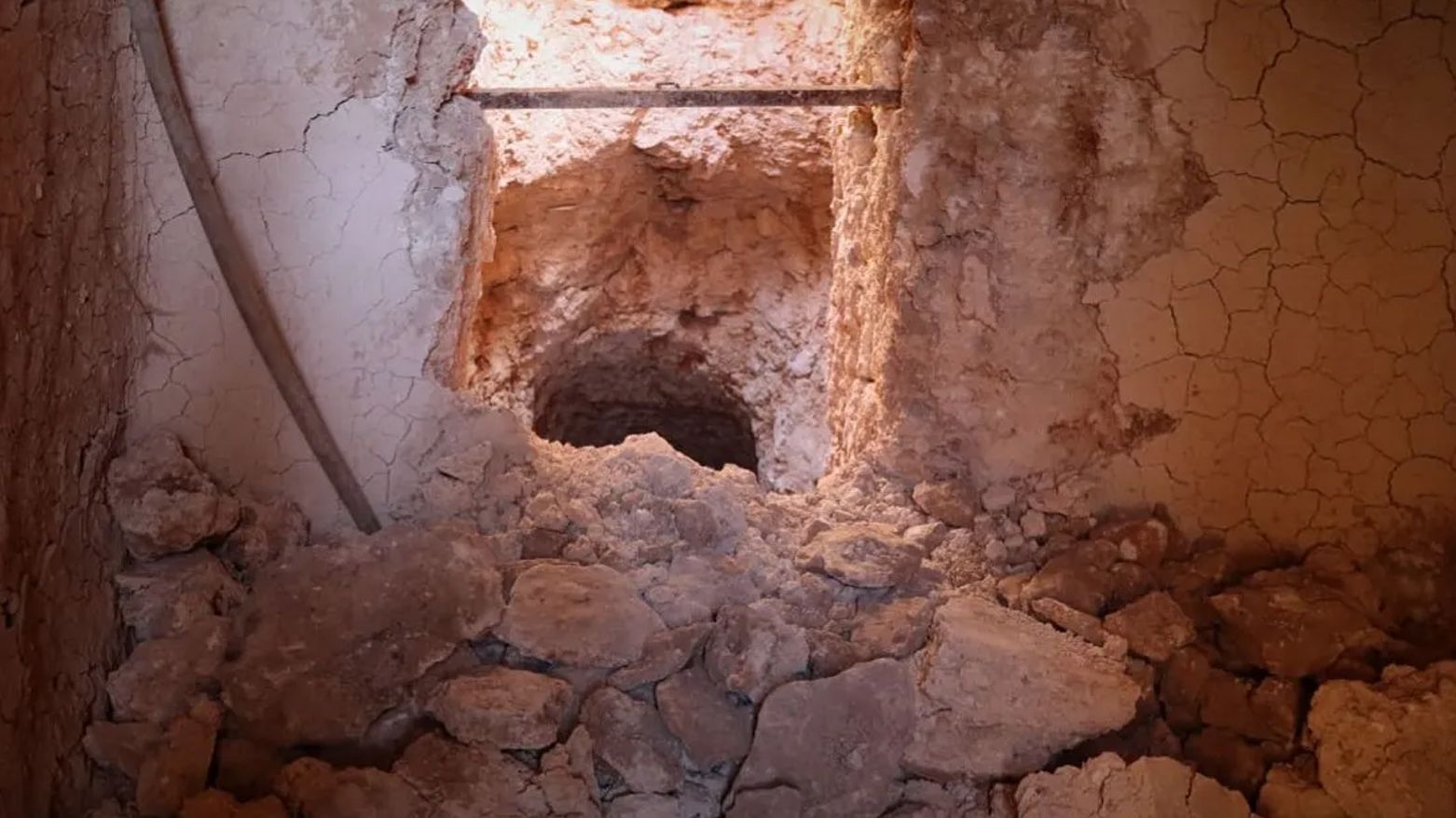
Further cementing the prison's connection to the former regime's power structure, Mousa revealed that "books and publications of the militias that were supported by the former regime" were also found within the prison.
While the specific militias were not named, the Syrian civil war saw the proliferation of numerous pro-Assad paramilitary groups, often operating with impunity and accused of some of the worst atrocities of the conflict.
The discovery of their literature inside a secret state torture facility provides powerful evidence of the deep and symbiotic relationship between the official security forces and the irregular militias that acted as their brutal enforcers.
The physical structure of the prison also points to a more complex and well-planned operation than a simple makeshift cell. Mousa revealed that the site is connected to a substantial tunnel that is five meters deep and extends for 40 meters. Such a feature suggests a significant investment in construction and planning, likely designed for the covert movement of prisoners, guards, or supplies, further underscoring the facility's role within a larger, organized system of repression.
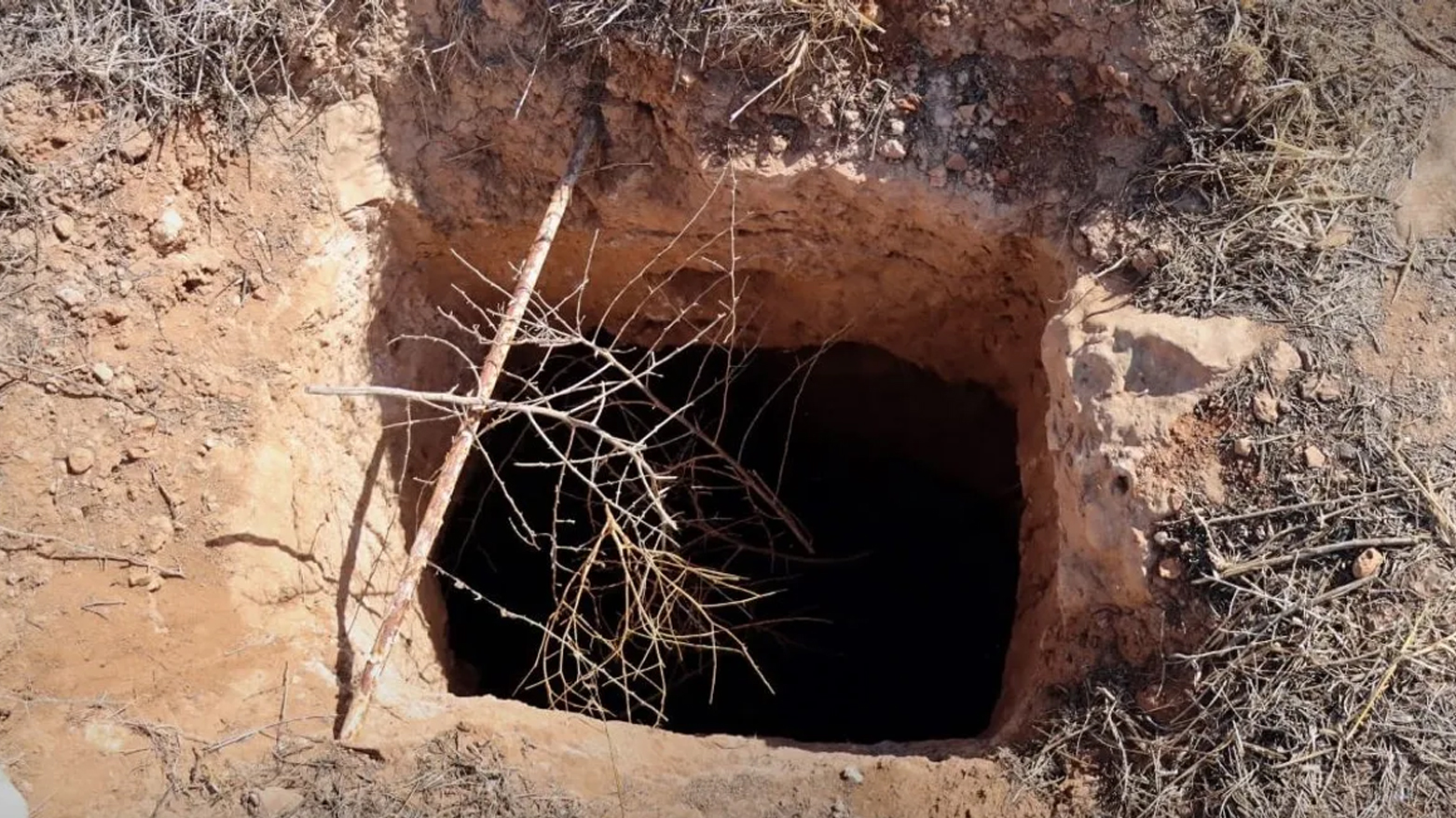
This discovery is likely just the tip of a terrifying iceberg. The report from SANA included a somber warning from human rights organizations, which have meticulously documented the Assad regime's vast network of prisons and intelligence centers for years.
These organizations maintain that "many of the secret prisons of the former regime remain undiscovered and are likely to be found throughout different areas of Syria."
For countless Syrian families whose loved ones were "disappeared" during the war—swallowed into the regime's gulag with no trace—each new discovery brings a painful mix of hope for answers and dread of what those answers might be.
The unearthing of the Buwaiza Salmiya prison is a crucial step in the long and arduous process of accounting for the missing, documenting the crimes of the past, and seeking a measure of justice for the victims and their families.
Confronting a Narcotic Legacy
Even as the new Syrian authorities begin to pull back the curtain on the state-sponsored violence of the past, they are engaged in an equally urgent battle against the sprawling criminal enterprises that the war economy nurtured.
In a separate but related front in the fight to restore the rule of law, the Syrian Anti-Narcotics Directorate announced a major victory in its campaign against the country's booming drug trade.
In a meticulously planned operation conducted in cooperation with the Internal Security Directorate, authorities targeted a major drug smuggling network in the al-Zamir area, a region in the vicinity of the capital, Damascus.
The raid was a resounding success, resulting in the seizure of an astonishing 12 million Captagon pills and the arrest of the individual identified as the head of the network.
Brigadier General Khalid Eid, the director of the Anti-Narcotics Directorate, announced the details of the operation, stating that it was launched based on precise intelligence.
"The branch of the Anti-Narcotics Directorate in the Damascus countryside conducted an operation against a drug smuggling network in the al-Zamir area that was trying to smuggle drugs out of the country," he explained.
The sheer scale of the seizure highlights the industrial-level production and trafficking of Captagon that has turned Syria into the world's preeminent narco-state.
Captagon, an amphetamine-type stimulant, became infamous during the civil war, where it was used by combatants on all sides to stay awake and fight without fear. However, in recent years, its production has evolved from a tool of war into the primary economic engine for a shattered state, with production centers reportedly operating under the protection of powerful figures linked to the former regime.
The drug is trafficked across the Middle East, particularly to the Gulf states, generating billions of dollars in illicit revenue.
The successful operation in al-Zamir represents a significant blow to this illicit economy. Brigadier General Eid confirmed the arrest of the network's leader and stated, "We are still searching for the remaining suspects," indicating that the operation is ongoing and aims to dismantle the entire trafficking chain. He also outlined the clear and decisive next steps that would be taken.
"The seized pills will be destroyed, and the suspect will also be referred to the court to complete the legal procedures," he said, signaling a commitment to transparency and the judicial process.
He clarified that "this operation is part of the pursuit and confrontation of smuggling and drug traffickers," framing the bust not as an isolated event, but as one battle in a larger, sustained war on the nation's powerful narco-networks.
Together, the discovery in Homs and the drug bust near Damascus reveal the monumental dual challenge facing Syria today. The nation must simultaneously act as an archeologist of its own recent, horrific past—carefully unearthing the evidence of mass torture and disappearance—while also acting as a determined law enforcement body fighting a present-day crime wave of unprecedented scale.
One front requires a painful reckoning with memory, justice, and accountability for the crimes of a state against its own people. The other demands a relentless and dangerous confrontation with the powerful criminal networks that threaten to define its future.
For a country struggling to emerge from the shadow of a decade of war, the path to stability and recovery will require a resolute commitment to confronting the ghosts in its subterranean prisons and the criminals in its midst.
